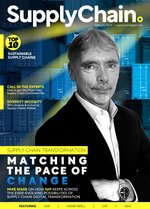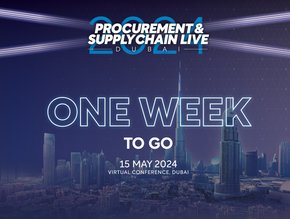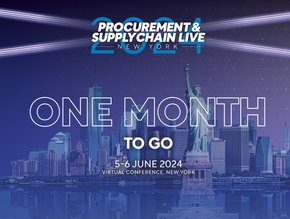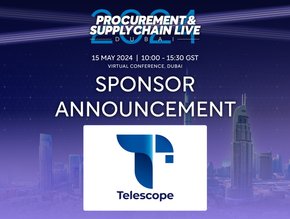How to Embed Supplier Diversity & Inclusion Programmes

Javette Hines is Head of Supply Chain Development, Inclusion & Sustainability at Citi, the retail bank and wealth management business. Based in New York, Citi has 240,000 employees worldwide.
In her role, Hine leads Citi's global strategy that integrates supplier diversity and sustainability into the procurement process.
She has 15 years’ experience in the role.
“I manage complex and high-value contracts and ensure compliance with internal and external standards,” she says. “I also provide innovative and impactful solutions for Citi's business objectives and ESG goals.”
Hines is passionate about advancing global gender equality and inclusion.
“I collaborate with the corporate sustainability and ESG team, NGOs, and external partners to support and promote these initiatives,” she says.
Hines – who is a licensed attorney in Georgia and New York – is also a certified professional in supplier diversity (CPSD) by the Institute for Supply Management, and is a global leader and a public speaker on sustainability and leadership.
And it was in this capacity that Hines spoke at a BizClik Procurement & Supply Chain LIVE event. The following is an edited version of her keynote entitled Integration That Works: Supply Diversity, Sustainability and the Sustainable Development Goals.
Why is supplier diversity important?
Supplier diversity is a strategic business imperative. When you talk about supplier diversity and sustainability, it's akin to when we look at our employee and customer bases. When we have diversity in those areas we’re assured not only economic growth but also the opportunity for continued advancement, innovation and creativity.
How does DE&I fit into sustainable development?
Sustainable development goals must be part of the same discussion. At Citi we have a document called ‘Banking on 2030’. This is based on our goal of ensuring sustainable development is integrated into both supplier diversity and sustainability.
What does a diverse supply chain look like?
When we talk about supplier diversity and diverse suppliers we are looking at minorities, women, the LGBTQE communities, small businesses, veterans service and disabled veterans.
When it comes to countries, we look at what the country law indicators are. For example, in the United States, Citi is a member of the National Minority Supplier Development Council, the National Gay Lesbian Chamber of Commerce and the Women's Business Enterprise National Council.
In other countries, we are a member of similar organisations, and this is important for us because supplier diversity is a global programme, and we look at our suppliers in the same way we look at our global customer base and global employee base.
We make sure we know not only where we are procuring goods and services from, but what the opportunities for employees of those suppliers look like.
This is why we work with organisations that look at 51% ownership, operation management and control of business as means to certify a business. When we track tier-one spend,this is just one measurement we look at. We want to be aware of how, at Citi, we are helping provide opportunities for diverse suppliers.
What are the key considerations around supplier diversity?
What are the country laws in place? Who are the diverse suppliers that you have an opportunity to grow? Who are the diverse suppliers that are currently doing business with you? What is the supplier’s sourcing footprint over the coming 12 to 18 months? These are just some of the considerations we put into play when we think about supplier diversity and sustainability.
How do you engage with suppliers?
We have to think about strategic sourcing, as well as tracking and evaluating diverse supplier spend. It is about having the right programmes in place that allow us to engage with suppliers in a meaningful way – by creating workshops, for example, designed to build capacity to ensure that even the smallest suppliers we work with can continue to grow.
It might not always be a tier-one opportunity; it could be a tier-two opportunity. But the key thing is advancement.
Another important part of supplier engagement is integrating conversations around Sustainable Development Goals and supply chain sustainability.
It is very important that all of our suppliers, whatever their size, understand how important this is not just to Citi, but to the global world and our economy.
We have a corporate responsibility questionnaire that we use to identify where suppliers might be falling – not just diverse suppliers, but all suppliers. This looks at environmental footprint and other key ESG areas such as modern slavery, around which there are a number of issues in the US, and certainly in other countries as well.
How important is leadership in driving supplier diversity?
Transformational leadership is key. One has to be knowledgeable, whether you are on the sourcing side, the community development side, the legal side, or working in third-party risk management.
But stakeholders must also be visionary; we have to be change agents.
We have to work together to truly understand what integration, diversity and inclusion looks like in a global landscape, and also understand the role each of us can play in this, whatever country we're in, or whatever company we work for.
Most important of all, we need to inspire people when we're talking about the integration of Sustainable Development Goals. We must be change-agents, to make these goals not just happen, but also be sustainable.
******
Make sure you check out the latest edition of Supply Chain Digital and also sign up to our global conference series - Procurement & Supply Chain 2024
******
Supply Chain Digital is a BizClik brand







